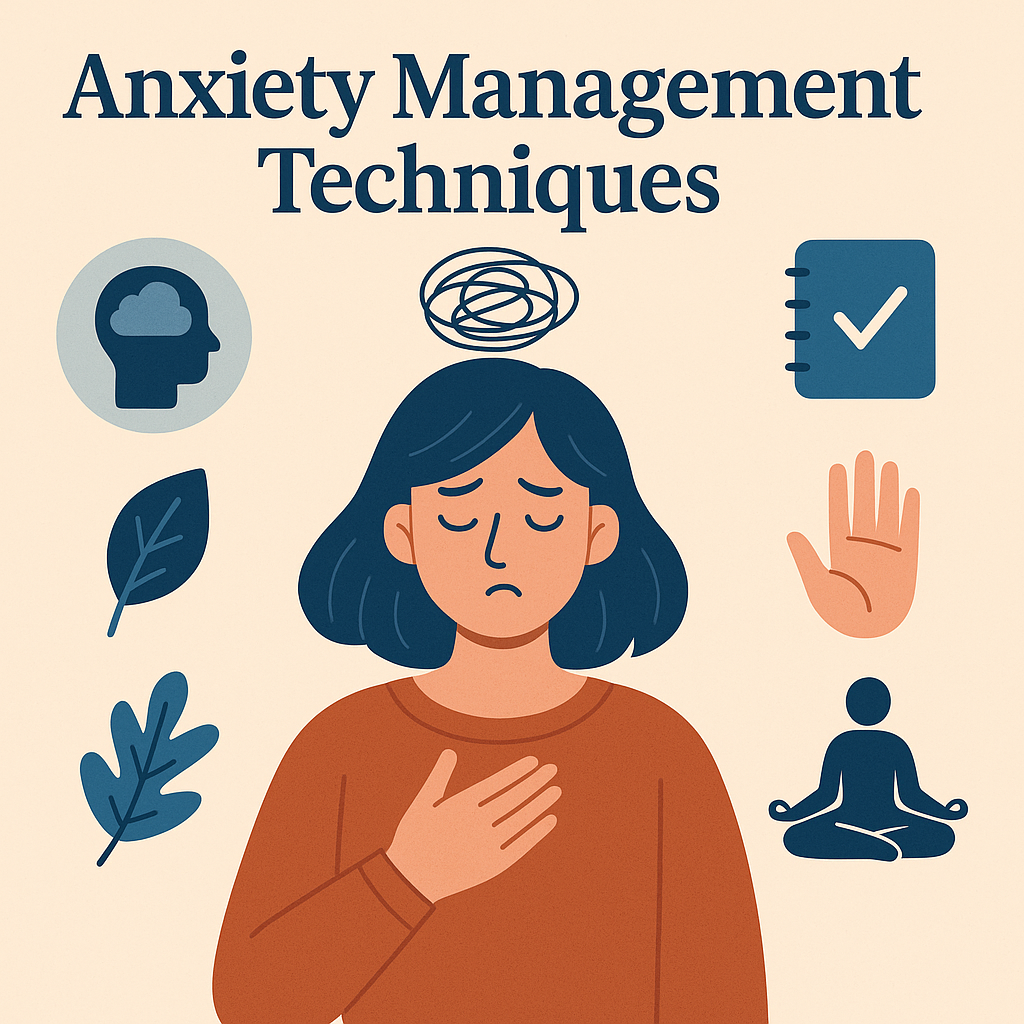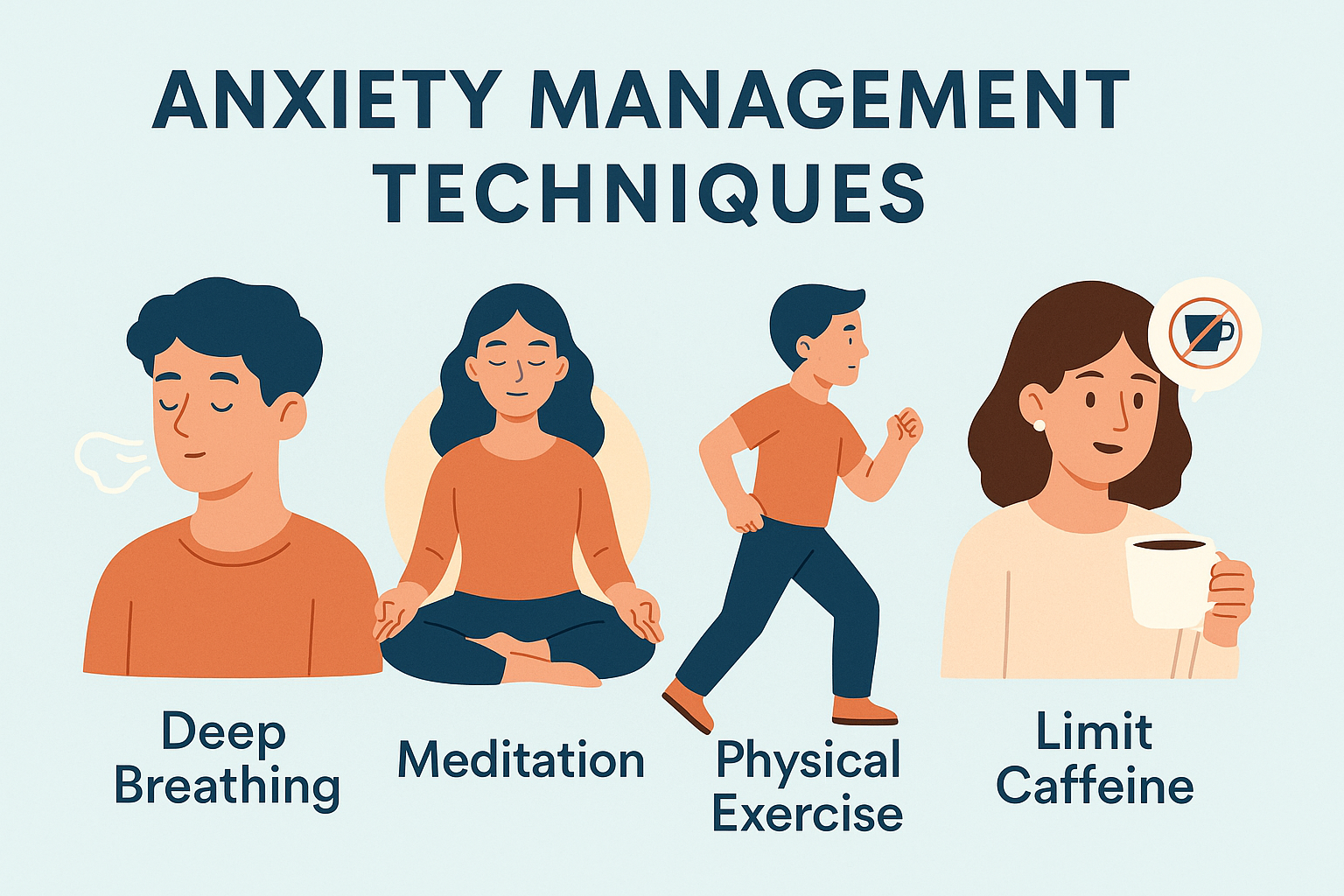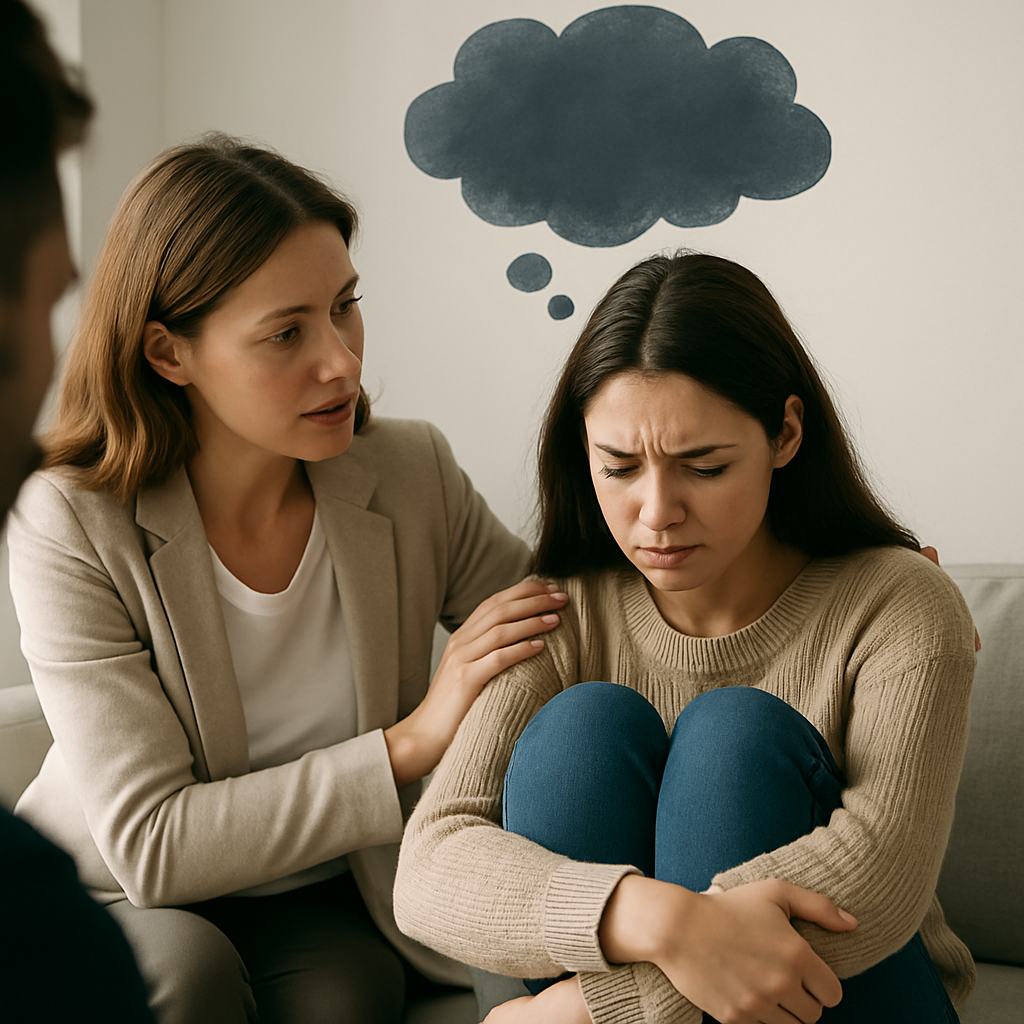
Working Anxiety Management Techniques You Can Use Today
It starts as a faint hum.
Then, a sudden jolt, like an alarm you can't turn off.
Your heart races. Your breath catches. A knot tightens in your stomach. Cold sweat. Shaking hands.
Anxiety can feel like your body's emergency system has been hijacked. It leaves you feeling overwhelmed and powerless.
When anxiety strikes, you want something that works. Right now!
This is your guide to building that lifeline. Through our years of helping people cope with their anxiety, we've learned practical, effective anxiety management techniques. Tools we want to share with you today.
So, you're ready whenever that internal alarm starts ringing.
First, Let's Understand What You're Working With
Anxiety isn't just being a little stressed. It's definitely not something that's "just" in your head or a sign that you are not strong enough to handle X.
No, anxiety is very real, and it's a serious disorder. Severe anxiety symptoms can leave you feeling debilitated. And if you don't know how to recognize and cope with anxiety, you might even think you are dying. (You are not; remember this.)
In fact, it is one of the most common and treated mental health concerns in the country. Research found that an estimated 31% of U.S. adults face anxiety disorders at some time in their lives.
A main aspect of managing anxiety is understanding your triggers.
Triggers are the specific situations, thoughts, places, or even people that tend to set off your anxiety.
Take a moment right now.
Can you think of one or two things that consistently make you feel on edge? Simply identifying them is the first step toward regaining control.
4 Types of Anxiety Management Techniques for Your Toolkit
Your toolkit should have various tools for anxiety relief. Different situations will call for different tools.
Let's get started.
Grounding Tools: For When You Feel Detached
When anxiety sends your mind spinning into future worries or past regrets, grounding pulls you back to the safety of the present moment.
● The 5-4-3-2-1 Method. Look around and name five things you can see, four things you can physically feel, three things you can hear, two things you can smell, and one thing you can taste.
● Temperature Change. Hold a piece of ice or splash cold water on your face. The sudden temperature change can shock your system out of a panic loop.
● Feel Your Feet. Whether you are sitting or standing, press your feet firmly into the floor. Notice the pressure and the solidness of the ground beneath you.
● Describe an Object. Pick up a nearby object—a pen, a set of keys, a coffee mug, anything. Describe it to yourself in immense detail. Explain its color, texture, weight, and temperature.
Breathing Tools: For Calming Your Body's Alarm
Anxious breathing is shallow and quick. Deliberate, slow breathing tells your nervous system that the danger has passed.
● Box Breathing. Inhale for a count of four. Hold your breath for four. Exhale for four. Hold the exhale for four. Repeat this "box" several times.
● 4-7-8 Breathing. Inhale through your nose for four seconds. Hold your breath for seven seconds. Exhale slowly through your mouth for eight seconds.
Mindful Tools: For Observing Thoughts Without Judgment
Mindfulness is the practice of noticing your anxious thoughts without getting swept away by them. You become the observer, not the participant.
● Mindful Walking. On a short walk, pay attention to the sensation of your feet hitting the ground, the air on your skin, and the sounds around you.
● A Five-Minute Body Scan. Lie down and bring your attention to your toes. Slowly scan up through your body, simply noticing any sensations without trying to change them.
● Leaves on a Stream. Close your eyes and imagine yourself sitting by a gently flowing stream. As each thought enters your mind, place it on a leaf and watch it float away.
Expressive Tools: For Getting Anxiety Out of Your Head
Sometimes, the best way to deal with anxious thoughts is to get them out. Externalizing them reduces their power.
● Brain Dump Journaling. Grab a notebook and write down everything you're worried about for 10 to 15 minutes. Don't worry about grammar or structure; just get it all out.
● Talk it Out. Call a trusted friend or family member and share what you are feeling.
● Draw Your Anxiety. You don't have to be an artist. Grab a piece of paper and scribble, draw shapes, or whatever comes to mind that represents your anxiety visually.
● Schedule "Worry Time". Set aside a specific, limited time each day (e.g., 15 minutes) to let yourself worry. When anxious thoughts pop up outside that time, gently tell yourself you'll deal with them during your scheduled slot.
When Your Toolkit Needs a Professional's Touch
These tools can be incredibly effective. However, sometimes anxiety is persistent and requires more support. Starting anxiety therapy is a sign of strength and self-awareness.
Consider reaching out if:
● Your anxiety is consistently interfering with your work, school, or relationships.
● You’ve started relying on unhealthy habits to cope.
● You experience persistent physical symptoms that concern you.
● You feel like you've tried these practical anxiety tips, and nothing seems to help.
● You feel hopeless or constantly on edge.
A therapist will help you understand the root of your anxiety, refine your coping techniques, and add more powerful anxiety therapy tools.
But remember, building these skills and finding what works for you takes practice, patience, and trial and error.
Ready to let the calm in?
We're here to help.
Disclaimer: The content on this blog is for informational purposes only and is not a substitute for professional medical advice. Always consult a qualified health provider with medical questions. Never disregard or delay seeking medical advice due to blog content. If you have a medical emergency, call your doctor or 911.



